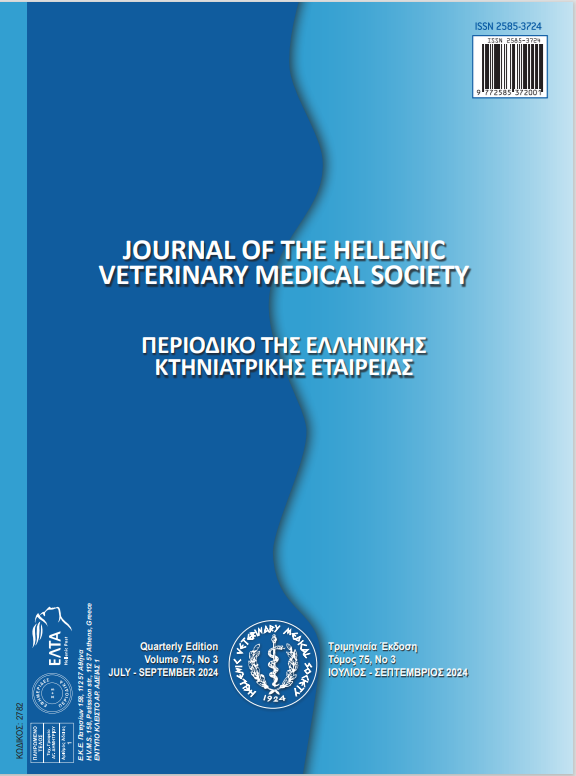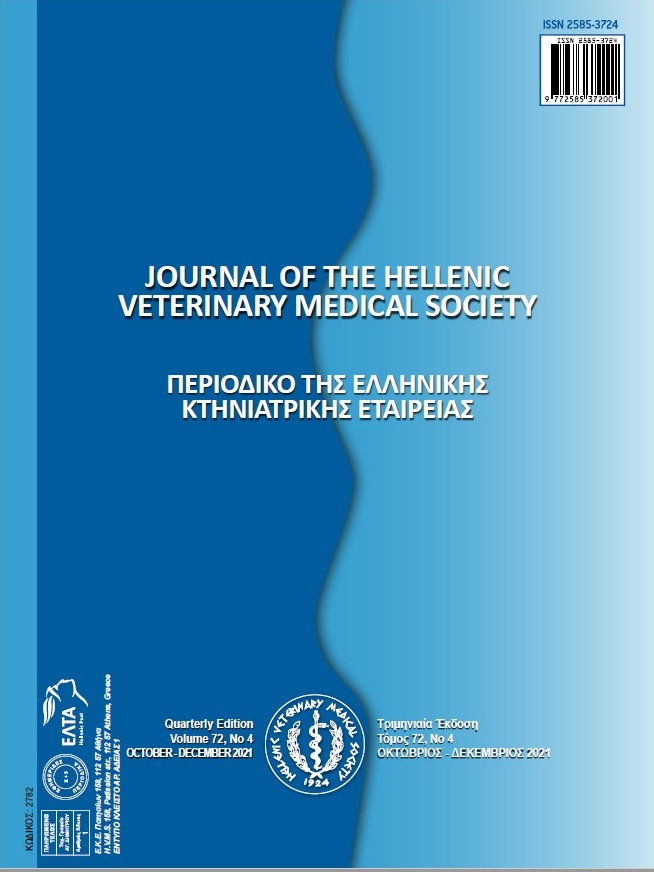Prevalence of Leishmania infantum in felines from Heraklion region, Crete
Resumen
Greece is recognized as an endemic region for various species of Leishmania, a genus of parasitic protozoa transmitted through the bites of infected female sandflies. This indicates that the country serves as a natural reservoir for this parasite, infecting both humans and animals. This study focuses on Heraklion, Crete, one of Greece's largest cities, where there is currently no available data on the prevalence of leishmaniosis in the feline population. While cases of canine leishmaniosis have been documented in various parts of the island, there have been no reported cases of feline leishmaniosis in Heraklion. This study primarily investigates the prevalence of leishmaniosis in cats as a means of detection in this species in Heraklion. To accomplish this, between 2018 – 2023, EDTA-blood samples and conjunctival swab samples were collected from a total of 253 feral cats. The cats were divided into two groups, depending on the location they lived (i.e., areas out of the city center or close to/in the city center): the initial group consisted of 112 cats, while the latter group comprised 141 cats. Both groups encompassed cats of various ages, habitats, and both genders. The samples were stored at -18 °C and analyzed with TaqMan real-time quantitative PCR for the presence of Leishmania infantum DNA.Out of the cat population included in the study, 15 were tested positive for FeL (5.93%). Despite the lower prevalence of leishmaniosis compared to dogs, it should be taken into account, especially for differential diagnosis. In conclusion, to the best of our knowledge, this is the first study that confirms the presence of FeL in felines in Heraklion.
Article Details
- Cómo citar
-
Smyrli, A., Sotiraki, S., Ligda, P., Ligdas, A., Restivakis, I., Chalkiadaki, V., Venetaki, K., Filos, N., Dalampeki, M., Theodosiadis, G., Daskalakis, M., & Cozma, V. (2024). Prevalence of Leishmania infantum in felines from Heraklion region, Crete. Journal of the Hellenic Veterinary Medical Society, 75(3), 7925–7934. https://doi.org/10.12681/jhvms.35939
- Número
- Vol. 75 Núm. 3 (2024)
- Sección
- Research Articles

Esta obra está bajo una licencia internacional Creative Commons Atribución-NoComercial 4.0.
Authors who publish with this journal agree to the following terms:
· Authors retain copyright and grant the journal right of first publication with the work simultaneously licensed under a Creative Commons Attribution Non-Commercial License that allows others to share the work with an acknowledgement of the work's authorship and initial publication in this journal.
· Authors are able to enter into separate, additional contractual arrangements for the non-exclusive distribution of the journal's published version of the work (e.g. post it to an institutional repository or publish it in a book), with an acknowledgement of its initial publication in this journal.
· Authors are permitted and encouraged to post their work online (preferably in institutional repositories or on their website) prior to and during the submission process, as it can lead to productive exchanges, as well as earlier and greater citation of published work.




